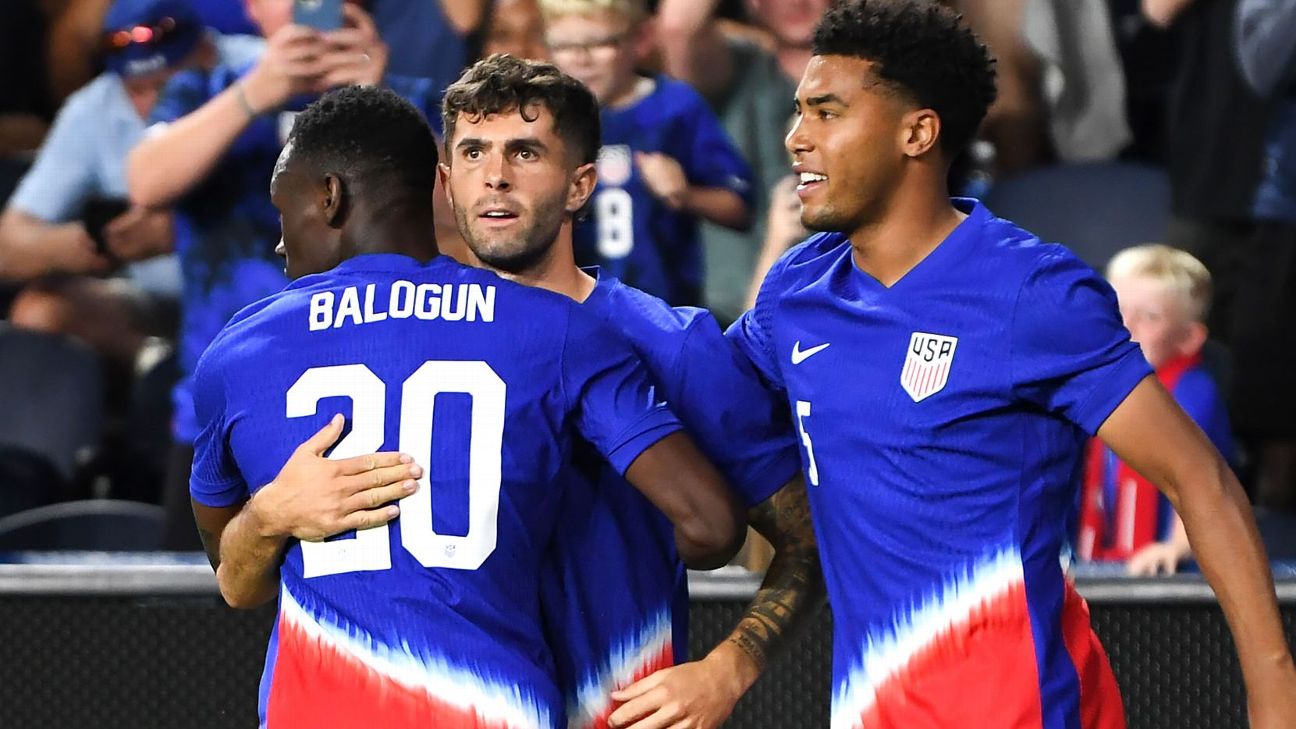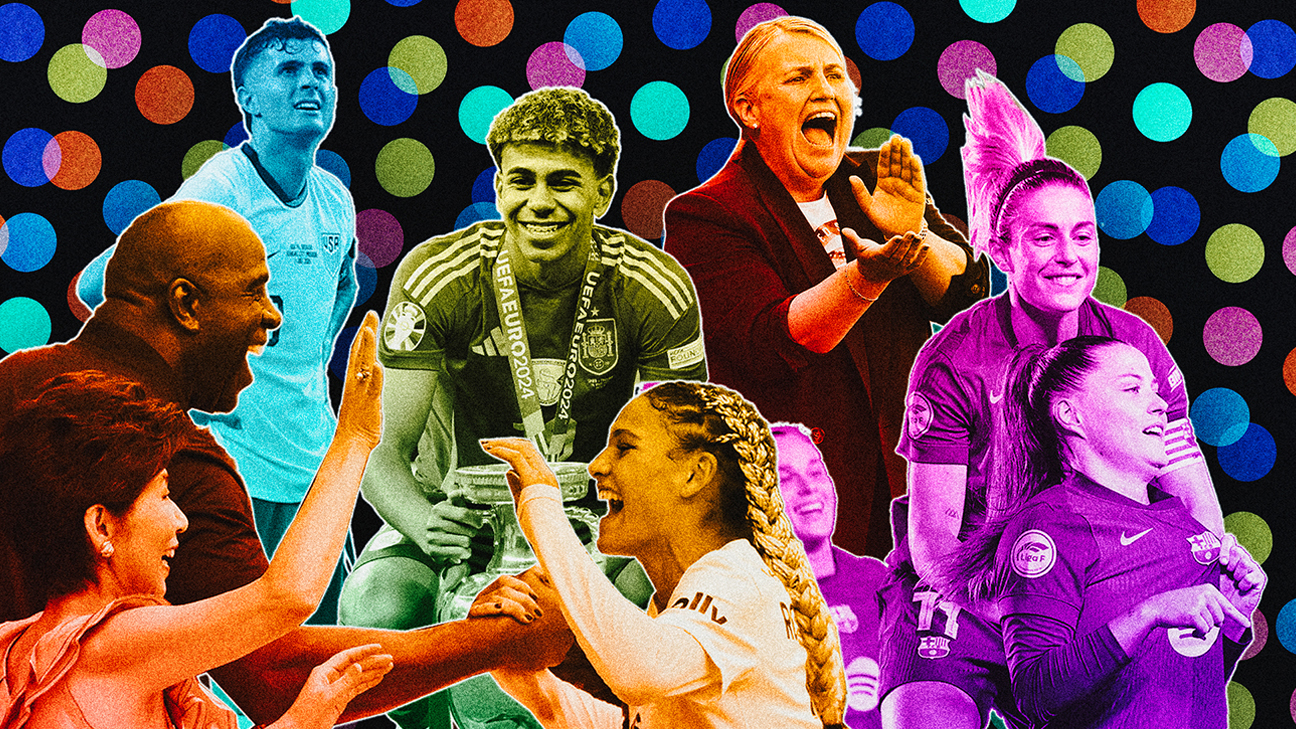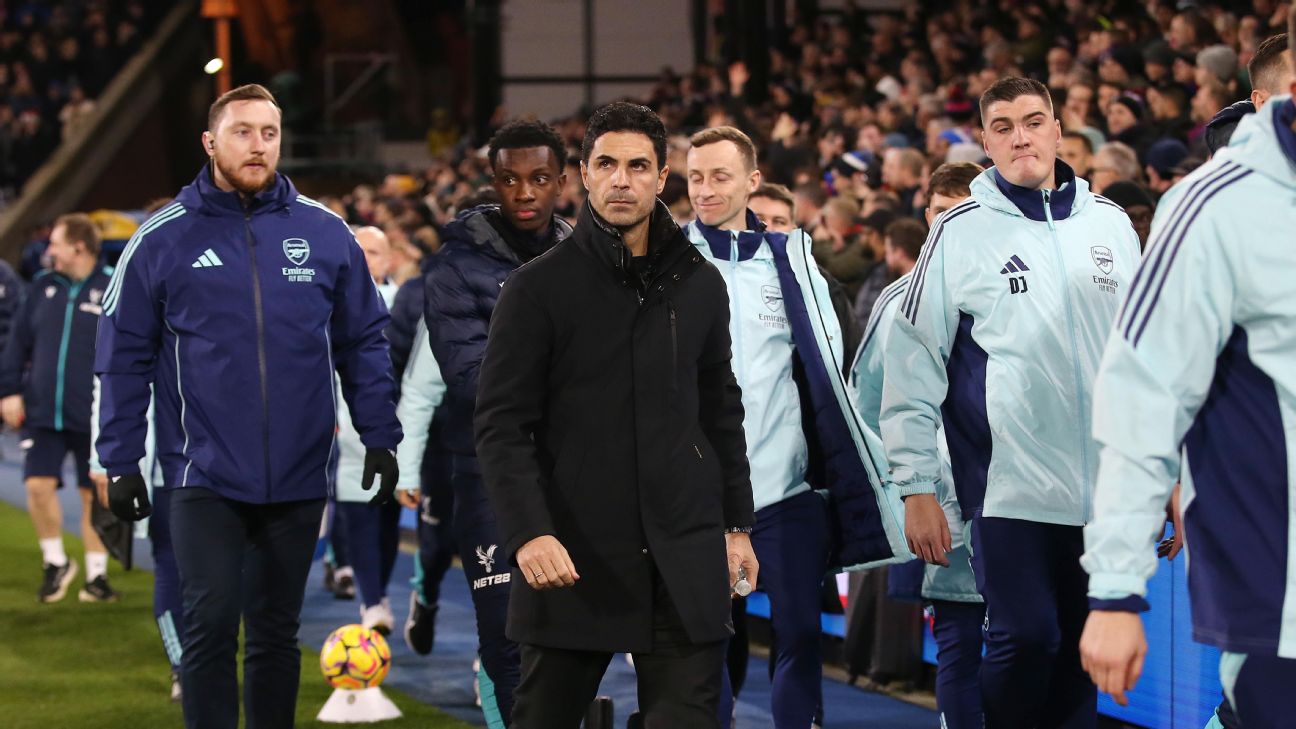Did you hear? On Dec. 11, a pair of Americans combined for a goal in the UEFA Champions League for the first time ever.
And not just any goal. It was a whirling scissor kick from Weston McKennie off a measured little dink from Timothy Weah. And it wasn’t just against any team: it was the capper in Juventus’ 2-0 win against the four-time defending Premier League champions, Manchester City.
OK, sure, everyone is beating Man City now, but what about what happened on Nov. 27? Malik Tillman became the first American to score twice in a Champions League game. His goals brought PSV Eindhoven level from a 2-0 deficit with Shakhtar Donetsk, and then fellow American Ricardo Pepi scored the winner in the 96th minute. Not only did Pepi’s goal earn PSV the victory, it also earned him and Tillman the distinction of being the first pair of Americans to score in a Champions League game.
Oh, and what about Antonee Robinson? Sure, Liverpool have won every game in the Champions League this year, but on Dec. 14, the American left-back provided a pair of sumptuous assists — one from a 70-yard run, the other from a looping deep cross — to give Fulham a 2-2 draw with the Premier League leaders on the road.
Americans are playing and affecting results at the highest level of soccer more than ever before. We no longer have to worry about whether Benny Feilhaber will get named in the starting lineup for the worst team in Premier League history. This is what we’ve all been waiting for.
And yet, the U.S. men’s national team doesn’t really have any new high-level wins or trophies to show for all the new talent. So with 2024 coming to a close, let’s take a long look back at the modern era of the USMNT and see how the so-called “Golden Generation” has performed compared to its predecessors. Are they any better? And if not, why not?
The USMNT is stuck
Judging national team performance is tricky. The only real competitive matches are in World Cup qualifying, your continental competitions like the Concacaf Gold Cup and in the World Cup itself. There just aren’t that many matches, and I’ll say it for approximately the 4,000th time in this space: individual match results are highly random.
It’s even trickier in the USMNT’s case because the expectation is that the Americans will always be the best team in Concacaf, or at least right there with Mexico. But being great in North America doesn’t really feel like progress; it’s table stakes. What we want to see is growth beyond this region.
Argentina can track its progress with matches against Brazil, Uruguay and Colombia, while European nations do get to beat up on the likes of San Marino and Gibraltar, but they also square off in the UEFA European Championship every four years, and occasionally the bigger countries play each other in qualifying. With the U.S., the only real competitive games against top-20 teams in the world not named Mexico happen once every four years — plus the occasional Copa America appearance.
That said, you can only play who’s in front of you, and there’s still something to be learned by grouping all of these games together and trying to weigh them properly. To do that, we’re going to use the Elo ratings, which look at every international game ever played and then adjust each team’s rating based on the result of each match.
In every match you play, you receive or lose points based on the result, the difficulty of the opposition, and then importance of the competition. If you lose to a team that’s much worse than you, then you’ll lose a lot of points. Draw with a team that’s much better than you, and you’ll gain a chunk of points (tiny chunks in friendlies, massive chunks in World Cups).
Since the 1994 World Cup ended, the U.S. has played 496 games, and here’s how its Elo rating has changed over that stretch:
As you can see from this image, the team improved rapidly from 1994 pretty much all the way through the 2002 World Cup. It feels safe to credit most of that improvement to the implementation of Major League Soccer. The 1994 World Cup team was a group of mostly former college players who essentially played with the U.S. as their full-time gig. Then MLS was launched in 1996, and professional soccer in the United States was suddenly a real option for lots of American athletes. Unsurprisingly, this greatly improved the quality of the national team.
However, the team has basically been stuck in that ratings band between 1,700 and 1,900 ever since the initial improvement tabled off. There are peaks and troughs, but the team’s average rating since the 2002 World Cup is almost exactly 1,800. The closest team to that in the current rankings is Ukraine (1,802), and it’s ranked 24th. The best team in the world, Spain, is rated 2,178. And the threshold for the top 10 is the Netherlands at 1,939.
The closest the U.S. has ever been to the current top-10 number was when it reached 1,889 after yet another dos a cero over Mexico in 2005. The highest the U.S. has ever been ranked in the Elo model was after a few victories in the 2009 Gold Cup that built on the run to the 2009 Confederations Cup final. The win over eventual World Cup champion Spain earned the U.S. 65 rating points, but that wasn’t even the most valuable result of the post-1994 era. No, that was from a 3-0 victory over Argentina in the 1995 Copa America in Uruguay.
If we define the “Golden Generation” era as everything after the 2018 World Cup, then the biggest result was the Americans’ 1-0 win over Iran to clinch a place in the knockout round of the 2022 World Cup. This is tied for the 13th-most-valuable result since 1994. Iran was ranked 24th before the match (and is currently 18th).
How do the different generations compare?
In addition to looking at the long progression over the past 20 years, we can also break up the team across the different World Cup cycles. A cycle begins with the first match played after a World Cup, and it ends with the last match played at a World Cup. And for 2018, when the U.S., you know, didn’t make the World Cup, we’re saying that cycle ended with its loss in Trinidad.
Here’s how the World Cup cycles stack up:
1998: 1,624 start rating to 1,698 end rating (increase of 74 points)
2002: 1,698 to 1,825 (increase of 127)
2006: 1,825 to 1,775 (decrease of 50)
2010: 1,775 to 1,769 (decrease of 6)
2014: 1,769 to 1,837 (increase of 68)
2018: 1,837 to 1,743 (decrease of 94)
2020: 1,743 to 1,819 (increase of 76)
Current: 1,819 to 1,759 (decrease of 60)
This tracks pretty well with the general trend mentioned above. There was a rapid improvement of 201 points over the 1998 and 2002 cycles, but then plenty of ups and downs over the 22 years since.
Now, I do think the 2010 cycle is getting unfairly penalized a bit here. The worst result of the modern USMNT era, according to Elo, is the 5-0 loss to Mexico in the 2009 Gold Cup final. It cost the U.S. 76 points and dropped it from ninth to 17th. Not great! But also, the A-team had just made a run to the Confederations Cup final, so none of those players featured in this match, while stars like Giovani dos Santos, Carlos Vela and Guillermo Ochoa all played for Mexico. Elo doesn’t know this, though, so I’d probably consider this era — 2009 and 2010 — to be the high point.
Why not 2002, when the team made its only run to the quarterfinals of the expanded World Cup era? I think that’s actually an instructive example.
If we just look at World Cup results, here’s how each one rates out by the overall change in Elo rating:
1998: lost 62 points
2002: gained 16 points
2006: lost 62 points
2010: lost 17 points
2014: lost 20 points
2022: gained 21 points
Yes, the U.S. made a run to the quarters in 2002, but did they actually perform better than in, say, 2022? In 2002, the Americans gained a ton of points for beating Portugal 3-2. They stayed even for a draw with South Korea. And then they lost a lot of points (66) for a 3-1 loss to a Poland team that wasn’t very good. In fact, that was the second-worst result of the post-1994 era. Then, the Americans beat Mexico in the round of 16, but they had also just beaten Mexico the year before. And then, a 1-0 loss to Germany in the quarters.
Compare that to 2022. A draw against Wales to open the tournament kept things even. Then, a draw against England, one of the best teams in the tournament, earned the U.S. points, as did its win over Iran. The loss to the Netherlands falls into roughly the same bucket as the loss to Germany in 2002; it just happened to come one round earlier. There was no win over a Portugal-quality side in this tournament, but there was also no multigoal loss to Poland.
That’s probably how I would frame whatever improvement there may have been during the era of the Golden Generation. While the signature results haven’t come along, there also aren’t as many awful results as we’ve seen in the past. Of the 20 worst results since 1994, as measured by Elo, three of them have come since the end of the 2018 cycle. And two of those were in matches the U.S. didn’t have to win: a 2-0 loss to Costa Rica on the last day of World Cup qualifying and a 2-1 loss to Trinidad and Tobago in the second leg of a Concacaf Nations League tie in which the Americans were already leading 3-0. Even the worst result of this era, the 2-1 loss to Panama at the Copa America this past summer, was less the result of a team-wide talent issue and instead because Weah punched a dude in the head.
While the decline of disastrous matches is new, it hasn’t necessarily led to anything better overall. The team is currently ranked 34th with an Elo rating of 1,759. The high point of the Golden Generation, rating-wise, came after the U.S.’s 2-0 World Cup qualifying win against Jamaica in October 2021. That put it up to 1,867, while its highest Elo rank was 14th, achieved after a 1-0 friendly win against Bosnia and Herzegovina in December of that same year.
Despite all of the new talent, the U.S. had already been well ahead of both of those peaks in the past.
This U.S. generation isn’t so Golden then, huh?
Perhaps the logical conclusion is that these current players aren’t any better than the players from the past. You could even argue that the current players might be a little worse. Sure, only a couple of guys here and there would make it to Europe in previous cycles, but the international market may have just been inefficient. It’s not like every player in the world who is good enough to be playing in the Champions League is already playing in the Champions League.
Now, I do think that the talent level of the current generation of American players is a bit overblown. Christian Pulisic looked like he could become a true superstar, as did Giovanni Reyna. The former is a borderline world-class player but not a superstar, and the latter has barely played any professional soccer over the past few years.
Tyler Adams had the potential to become an elite holding midfielder, but he just can’t stay healthy. Chris Richards went from Bayern Munich to in-and-out of the Crystal Palace starting lineup. Weah left Paris Saint-Germain and has been in and out of the starting lineup with a reduced Juventus team.
McKennie occupies the same spot at the same club as Weah. And Sergiño Dest went from Ajax Amsterdam to Barcelona and then back to the Eredivisie with PSV.
Outside of Reyna and maybe Adams, none of these are bad outcomes, but based on earlier expectations, none of them are really great outcomes, either.
At the same time, you have to do a ton of mental and economic and political and sociological and tactical gymnastics to convince yourself that the current U.S. team, filled with contributors for good teams across Europe’s biggest leagues, is worse than all of these other teams that were mostly made up of players from MLS, Scandinavia and low-level Big Five sides.
Which still brings us back here: Why isn’t the U.S. better?
Perhaps some of it was coaching — and we’ll see how that plays out over the next two years with Mauricio Pochettino on the sideline instead of Gregg Berhalter — but the simplest explanation is that everyone else is better, too. In North America, most of the teams in the tier below Mexico and the U.S. have way more players playing in MLS or other higher-level professional leagues than they’ve had in the past. Canada were an afterthought for every World Cup cycle since 1994 — until 2022. Now they have a coach with Champions League and Premier League experience and a number of guys on top teams in Europe.
Beyond North America, so many of the other teams in this same cluster as the U.S. — countries that could conceivably be ranked anywhere between 12th and 35th — are seeing the same trends with their own player pools. In mid-2002, Japan was ranked one spot ahead of the U.S. in the Elo ratings. Its roster for that World Cup included four guys who played in Europe; the other 19 played in Japan. Come 2022, with the rosters expanded to 26, 19 players were playing in Europe. Over 20 years, the share of players on its roster playing in Europe went from 17% to 73%.
The same holds true for the team ranked one spot below the U.S. in 2002: Belgium. Its roster that year had six men playing in leagues in England, Spain, Germany, France or Italy. That’s 26%. In 2022, 81% were playing in one of those five major countries.
Champions League clubs are scouting and signing more Americans than ever before, but they’re also signing more Japanese, Swiss, Ecuadorean, Norwegian, Moroccan, Austrian and Belgian players than ever before, too.
If someone at U.S. Soccer figured out how to build a time machine and then used it to bring the current roster to any of the pre-2022 World Cups, the U.S.’s past results would’ve almost definitely improved.
However, the unfortunate truth — one that often goes unspoken in most of these “why isn’t the U.S. better at soccer?” conversations — is that in most of the sports that the U.S. dominates, there isn’t the same level of global competition. But in soccer, the U.S. isn’t the only national team trying to find ways to improve player development and coaching and see its players star for the biggest clubs in the world.
So to improve your standing in the global pecking order, it’s not just that you have to do all of those things. You have to do all of those things, and you have to do them better than everyone else.



